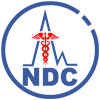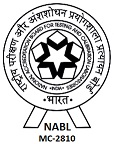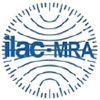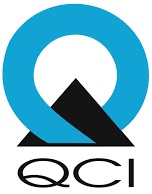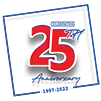Menu
Cardiology
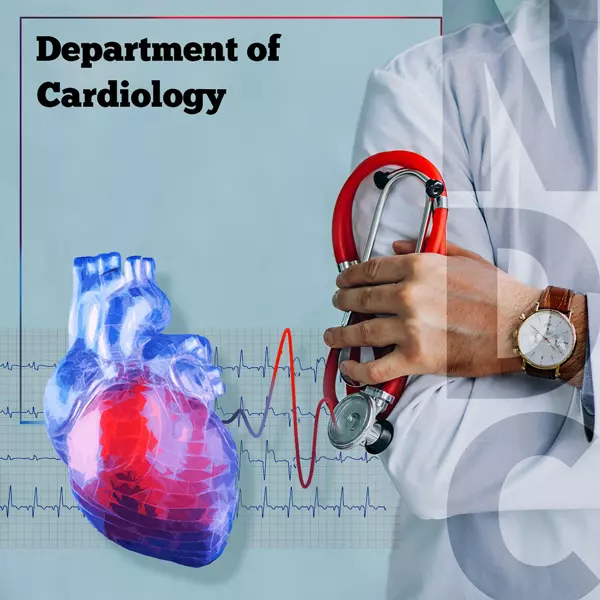
Our cardiology department specializes in providing accurate diagnosis for treating cardiac diseases. This is a predominantly monitoring centric along with other critical diagnostic tests that help you to identify the problem accurately if there is any.
List of Tests -
It is very common to find the heart patients who have normal ECG. One must remember that the ECGs are taken at rest when the heart is beating at its lowest rate. In some of cases the patient would also agree that at the time of rest there is no pain in the chest, the angina symptoms would only come when they increase the heart rate, while doing some physical exertion like walking. In this condition, where we need a TMT test. The patients might gradually increase their heart rate, thus increasing the blood requirement of the heart muscles. Simultaneously ECG records are taken. Patients have to physically bring to bear for this test which uses a computerised machine. The continuous ECG monitoring during the exercise would reflect to the blood and oxygen deficit in the muscles of the heart during the exercise. TMT test is also called as Exercise Stress Test, Computerised Stress Test or simply Stress test. It is the very easy, popular and common test performed on heart patients to determine the severity of the heart disease. Taken at an interval, this test can also show the improvement or deterioration of patient’s angina.
A negative TMT or Stress Test is declared when the patient can reach a certain heart rate without showing any ECG changes. This rate is known as target heart rate and it is also calculated by a formula (Target Heart Rate = 220 – age of patient). If this rate is reached by the patient without producing any ECG changes, though the TMT can be called negative, but it would not mean that the blockage is zero. It is meant only by the person performing the test probably has a blockage of less than 70%.
How is an TMT test performed?
Undergoing an TMT involves exercising to the maximum effort possible for that individual.
The test is performed in a specialised laboratory where an experienced doctor (often a cardiologist) supervises the procedure.
The patient is attached to ECG leads which continuously record the heart’s electrical activity. Usually a treadmill is used to exercise the patient, with gradually increasing difficulty, to achieve the highest possible workload.
Frequent blood pressure and pulse measurements are taken during the exercise, and continuous ECG recording will detect any evidence of heart muscle ischaemia (where the oxygen demand of the heart muscle is greater than the oxygen supplied by the blood flow to the heart muscle).
The test is stopped when maximal workload is reached, or if ECG changes suggestive of angina occur, or blood pressure decreases. Equipment and staff for a full resuscitation are usually available in case of any adverse events.
TMT Test Results Explained
The results of a TMT are usually reported as either negative, positive or inconclusive.
- Negative: A negative test result indicates a normal test which significantly decreases the likelihood of coronary artery disease.
- Positive: A positive test result occurs where a diagnosis of coronary artery disease (IHD, angina) is definite.
- Inconclusive: An inconclusive test result is usually due to non-diagnostic ECG changes, or when the test is terminated early due to exhaustion, before maximum heart rate or workload is reached.
An electrocardiogram records the electrical signals in your heart. It’s a common and painless test used to quickly detect heart problems and monitor your heart’s health.
Electrocardiograms — also called ECGs or EKGs — are often done in a doctor’s office, a clinic or a hospital room. ECG machines are standard equipment in operating rooms and ambulances. Some personal devices, such as smart watches, offer ECG monitoring. Ask your doctor if this is an option for you.
Why it’s done
An electrocardiogram is a painless, non-invasive way to help diagnose many common heart problems in people of all ages. Your doctor may use an electrocardiogram to determine or detect:
- Abnormal heart rhythm (arrhythmias)
- If blocked or narrowed arteries in your heart (coronary artery disease) are causing chest pain or a heart attack
- Whether you have had a previous heart attack
- How well certain heart disease treatments, such as a pacemaker, are working
You may need an ECG if you have any of the following signs and symptoms:
- Chest pain
- Dizziness, lightheadedness or confusion
- Heart palpitations
- Rapid pulse
- Shortness of breath
- Weakness, fatigue or a decline in ability to exercise
Risks
An electrocardiogram is a safe procedure. There is no risk of electrical shock during the test because the electrodes used do not produce electricity. The electrodes only record the electrical activity of your heart.
You may have minor discomfort, similar to removing a bandage, when the electrodes are removed. Some people develop a slight rash where the patches were placed.
How you prepare
No special preparations are necessary for a standard electrocardiogram. Tell your doctor about any medications and supplements you take. These can often affect the results of your test.
What to Expect
An electrocardiogram can be done in a doctor’s office or hospital and is often done by a nurse or technician.
Before
You may be asked to change into a hospital gown. If you have hair on the parts of your body where the electrodes will be placed, the technician may shave the hair so that the patches stick.
Once you’re ready, you’ll be asked to lie on an examining table or bed.
During
During an ECG, up to 12 sensors (electrodes) will be attached to your chest and limbs. The electrodes are sticky patches with wires that connect to a monitor. They record the electrical signals that make your heart beat. A computer records the information and displays it as waves on a monitor or on paper.
You can breathe normally during the test, but you will need to lie still. Make sure you’re warm and ready to lie still. Moving, talking or shivering may distort the test results. A standard ECG takes a few minutes.
After
You can resume your normal activities after your electrocardiogram.
Results
Your doctor may discuss your results with you the same day as your electrocardiogram or at your next appointment.
If your electrocardiogram is normal, you may not need any other tests. If the results show an abnormality with your heart, you may need another ECG or other diagnostic tests, such as an echocardiogram. Treatment depends on what’s causing your signs and symptoms.
Your doctor will review the information recorded by the ECG machine and look for any problems with your heart, including:
- Heart rate. Normally, heart rate can be measured by checking your pulse. An ECG may be helpful if your pulse is difficult to feel or too fast or too irregular to count accurately. An ECG can help your doctor identify an unusually fast heart rate (tachycardia) or an unusually slow heart rate (bradycardia).
- Heart rhythm. An ECG can show heart rhythm irregularities (arrhythmias). These conditions may occur when any part of the heart’s electrical system malfunctions. In other cases, medications, such as beta blockers, cocaine, amphetamines, and over-the-counter cold and allergy drugs, can trigger arrhythmias.
- Heart attack. An ECG can show evidence of a previous heart attack or one that’s in progress. The patterns on the ECG may indicate which part of your heart has been damaged, as well as the extent of the damage.
- Inadequate blood and oxygen supply to the heart. An ECG done while you’re having symptoms can help your doctor determine whether chest pain is caused by reduced blood flow to the heart muscle, such as with the chest pain of unstable angina.
Structural abnormalities. An ECG can provide clues about enlargement of the chambers or walls of the heart, heart defects and other heart problems.
Color Doppler is an enhanced form of Doppler echocardiography. With color Doppler, different colors are used to designate the direction of blood flow. This simplifies the interpretation of the Doppler technique.
Color Doppler echocardiography is essentially 2-D Doppler echocardiography with flow encoded in color to show its direction (red is toward and blue is away from the transducer). In color flow mapping, blood flow velocity is measured along each sector line of a 2-D echocardiographic image and is displayed as color coded pixels. Color flow Doppler is most useful for assessing valves for regurgitation and stenosis, detecting the presence of intracardiac shunts, and imaging blood flow in the heart.
Echocardiography is a test that uses sound waves to produce live images of your heart. The image is called an echocardiogram. This test allows your doctor to monitor how your heart and its valves are functioning.
The images can help them get information about:
- Blood clots in the heart chambers
- Fluid in the sac around the heart
- Problems with the aorta, which is the main artery connected to the heart
- Problems with the pumping function or relaxing function of the heart
- Problems with the function of your heart valves
- Pressures in the heart
An echocardiogram is key in determining the health of the heart muscle, especially after a heart attack. It can also reveal heart defects in unborn babies.
Getting an echocardiogram is painless. There are only risks in very rare cases with certain types of echocardiograms or if contrast is used for the echocardiogram.
Risks
Echocardiograms are considered very safe. Unlike other imaging techniques, such as X-rays, echocardiograms don’t use radiation.
A transthoracic echocardiogram carries no risk if it is done without contrast injection. There’s a chance for slight discomfort when the EKG electrodes are removed from your skin. This may feel similar to pulling off a Band-Aid.
If contrast injection is used, there is a slight risk of complications such as allergic reaction to the contrast. Contrast should not be used in pregnant patients who have an echocardiogram.
There’s a rare chance the tube used in a transesophageal echocardiogram may scrape the esophagus and cause irritation. In very rare cases, it can puncture the esophagus to cause a potentially life threatening complication called esophageal perforation. The most common side effect is a sore throat due to irritation of the back of the throat. You may also feel a bit relaxed or drowsy due to the sedative used in the procedure.
The medication or exercise used to get your heart rate up in a stress echocardiogram could temporarily cause an irregular heartbeat or precipitate a heart attack. The procedure will be supervised, which reduces the risk of a serious reaction.
During the Procedure
Most echocardiograms take less than an hour and can take place in a hospital or doctor’s office.
For a transthoracic echocardiogram, the steps are as follows:
- You will need to undress from the waist up.
- The technician will attach electrodes to your body.
- The technician will move a transducer back and forth on your chest to record the sound waves of your heart as an image.
- You may be asked to breathe or move in a certain way.
For a transesophageal echocardiogram, the steps are as follows:
- Your throat will be numbed.
- You will then be given a sedative to help you relax during the procedure.
- The transducer will be guided down your throat with a tube and will take images of your heart through your esophagus.
The procedure of a stress echocardiogram is the same as a transthoracic echocardiogram, except a stress echocardiogram takes pictures before and after performing exercise. The duration of the exercise is usually 6 to 10 minutes but can be shorter or longer depending on your exercise tolerance and fitness level.
How to Prepare for an Echocardiogram
A transthoracic echocardiogram requires no special preparation.
However, if you undergo a transesophageal echocardiogram, your doctor will instruct you not to eat anything for a few hours before the test. This is to prevent you from vomiting during the test. You may also not be able to drive for a few hours afterward due to the sedatives.
If your doctor has ordered a stress echocardiogram, wear clothes and shoes that are comfortable to exercise in.
Recovery After an Echocardiogram
Generally, there is little to no recovery time needed for an echocardiogram.
For transesophageal echocardiogram, you may experience some throat soreness. Any numbness around your throat should go away within about 2 hours.
After an Echocardiogram
Once the technician has obtained the images, it usually takes 20 to 30 minutes to perform the measurement. Then, the doctor can review the images immediately and inform you of the results.
The results may reveal abnormalities such as:
- Damage to the heart muscle
- Heart defects
- Abnormal cardiac chamber size
- Problems with pumping function
- Stiffness of the heart
- Valve problems
- Clots in the heart
- Problems with blood flow to the heart during exercise
If your doctor is concerned about your results, they may refer you to a cardiologist. This is a doctor who specializes in the heart. Your doctor may order more tests or physical exams before diagnosing any issues.
If you’re diagnosed with a heart condition, your doctor will work with you to develop a treatment plan that works best for you.
A Holter monitor is a small, wearable device that keeps track of your heart rhythm. Your doctor may want you to wear a Holter monitor for one to two days. During that time, the device records all of your heartbeats.
A Holter monitor test is usually performed after a traditional test to check your heart rhythm (electrocardiogram), especially if the electrocardiogram doesn’t give your doctor enough information about your heart’s condition.
Your doctor uses information captured on the Holter monitor to figure out if you have a heart rhythm problem. If standard Holter monitoring doesn’t capture your irregular heartbeat, your doctor may suggest a wireless Holter monitor, which can work for weeks.
Some personal devices, such as smart watches, offer electrocardiogram monitoring. Ask your doctor if this is an option for you.
Why it’s done
If you have signs or symptoms of a heart problem, such as an irregular heartbeat (arrhythmia) or unexplained fainting, your doctor may order a test called an electrocardiogram. An electrocardiogram is a brief, noninvasive test that uses electrodes taped to your chest to check your heart’s rhythm.
However, sometimes an electrocardiogram doesn’t detect any irregularities in your heart rhythm because you’re hooked up to the machine for only a short time. If your signs and symptoms suggest that an occasionally irregular heart rhythm may be causing your condition, your doctor may recommend that you wear a Holter monitor for a day or so.
Over that time, the Holter monitor may be able to detect irregularities in your heart rhythm that an electrocardiogram couldn’t detect.
Your doctor may also order a Holter monitor if you have a heart condition that increases your risk of an abnormal heart rhythm. Your doctor may suggest you wear a Holter monitor for a day or two, even if you haven’t had any symptoms of an abnormal heartbeat.
Risks
There are no significant risks involved in wearing a Holter monitor other than possible discomfort or skin irritation where the electrodes were placed.
However, the Holter monitor can’t get wet, or it will be damaged. Don’t swim or bathe for the entire time you’re wearing your Holter monitor. However, if you have a wireless Holter monitor, you’ll be shown how to disconnect and reconnect the sensors and the monitor so that you can shower or bathe.
Holter monitors aren’t usually affected by other electrical appliances. But avoid metal detectors, magnets, microwave ovens, electric blankets, and electric razors and toothbrushes while wearing one because these devices can interrupt the signal from the electrodes to the Holter monitor. Also, keep your cellphones and portable music players at least 6 inches from the monitor for the same reason.
How you prepare
If your doctor recommends Holter monitoring, you’ll have the device placed during a scheduled appointment. Unless your doctor tells you otherwise, plan to bathe before this appointment. Most monitors can’t be removed and must be kept dry once monitoring begins.
A technician will place electrodes that sense your heartbeat on your chest. These electrodes are about the size of a silver dollar. For men, a small amount of hair may be shaved to make sure the electrodes stick.
The technician will then connect the electrode to a recording device with several wires and will instruct you on how to properly wear the recording device so that it can record data transmitted from the electrodes. The recording device is about the size of a deck of cards.
You’ll be instructed to keep a diary of all the activities you do while wearing the monitor. It’s particularly important to record in the diary any symptoms of palpitations, skipped heartbeats, shortness of breath, chest pain or lightheadedness. You’ll usually be given a form to help you record your activities and any symptoms.
Once your monitor is fitted and you’ve received instructions on how to wear it, you can leave your doctor’s office and resume your normal activities.
What to Expect
During the procedure
Holter monitoring is painless and noninvasive. You can hide the electrodes and wires under your clothes, and you can wear the recording device on your belt or attached to a strap. Once your monitoring begins, don’t take the Holter monitor off — you must wear it at all times, even while you sleep.
While you wear a Holter monitor, you can carry out your usual daily activities. Your doctor will tell you how long you’ll need to wear the monitor. It may vary from 24 to 48 hours, depending on what condition your doctor suspects you have or how frequently you have symptoms of a heart problem. A wireless Holter monitor can work for weeks.
You’ll be asked to keep a diary of all your daily activities while you’re wearing the monitor. Write down what activities you do and exactly what time you do them. Also write down any symptoms you have while you’re wearing the monitor, such as chest pain, shortness of breath or skipped heartbeats.
Your doctor can compare data from the Holter monitor recorder with your diary, which can help diagnose your condition.
After the procedure
Once your monitoring period is over, you’ll return the device to your doctor’s office, along with the diary you kept while you wore the Holter monitor. Your doctor will compare the data from the recorder and the activities and symptoms you wrote down.
Results
After your doctor has looked at the results of the Holter monitor recorder and what you’ve written in your activity diary, he or she will talk to you about your results. The information from the Holter monitor may reveal that you have a heart condition, or your doctor may need more tests to find out what may be causing your symptoms.
In some cases, your doctor may not be able to diagnose your condition based on the results of the Holter monitor test, especially if you didn’t have any irregular heart rhythms while you wore the monitor.
Your doctor may then recommend a wireless Holter monitor or an event recorder, both of which can be worn longer than a standard Holter monitor. Event recorders are similar to Holter monitors and generally require you to push a button when you feel symptoms. There are several different types of event recorders.
Ambulatory Blood Pressure Monitoring (ABPM) measures your blood pressure over the course of a full day (24 hours). You will wear a blood pressure cuff on your upper arm that is connected to a monitor. The monitor records your blood pressure readings 3 times per hour while awake and 1 time per hour while sleeping.
Why Monitor Blood Pressure for 24 hours?
Measuring your blood pressure in your normal environment and during your usual daily routines gives your doctor a better idea of how your blood pressure changes throughout the day. Some reasons for having ABPM:
- White coat hypertension: high blood pressure in clinic settings (around medical staff or doctors) with lower blood pressure outside of clinic.
- High blood pressure without a diagnosis of hypertension: blood pressure may be high sometimes and more blood pressure measurements are needed.
- Hypertension medicine assessment: to make sure your blood pressure medicines are working as they should all day.
- Assess symptoms – such as lightheadedness, dizziness, or headaches, to check if these are due to blood pressure.
The Blood Pressure Monitor
The monitor is a small box that connects to the cuff on your arm. The monitor remains in a black pouch throughout the day. You may wear it with a belt to keep it up on your side and out of the way. During the measurement, the monitor screen will be black and will not display any blood pressure readings.
Important Reminders and Tips
- When the cuff inflates and you feel the cuff tightening, stop what you are doing and remain as still as possible (without putting yourself at risk). This allows the cuff to sense your blood pressure accurately. Extend your arm, and relax. If you are walking or standing, remain standing and drop the arm with the cuff to your side.
- Avoid vigorous physical activity, such as jogging/running, biking outdoors, lawn mowing, etc, while wearing the blood pressure monitor.
- If the monitor misses a reading, you will feel the cuff inflate again in 1-2 minutes to try another reading.
- When you are ready for bed, remove the cord from around your neck and place the monitor by your side. It should be placed far enough away so you do not roll on it.
- Showering: do not wear the monitor into the shower/bath. Remove the cuff from your upper arm and set aside. Do not disconnect anything or push any buttons on the monitor. After your shower, place the cuff back on your upper arm as described below.
Putting the Cuff Back On
- Make sure the cuff is in the correct position when on your arm. The rubber tube should point upward and in the center of your upper arm. Check the cuff and place it above the crease of your arm. Make sure the rubber tubbing is not pinched or kinked to allow proper air flow.
- You may take the cuff off if it causes pain or discomfort. Remove the cuff to rest the arm for 5-10 minutes in between readings. Place the cuff back on your arm as directed above.
- If the cuff is causing pain and you want to stop the test you may turn the monitor off. Hold the circle button on the lower right of the monitor as it beeps. A message will appear “Do you want to switch the unit off?” Use the arrow buttons to highlight “yes” and press the circle button to select. The monitor will turn off. It cannot be turned back on to start the test. Once you turn the monitor off, the test is over.
Recording Activities
The activity log is an important part of the ABPM procedure and should be completed as instructed by the clinician. List changes in activity/symptoms throughout your day. If you are doing the same activity for an extended time you do not need to write this over and over, instead write ranges of time. Record your bedtime and wake time. Also record if you get up during the night to use the restroom or for any other reason.
Returning the Monitor
The cuff, monitor, activity log, and belt (if you were given one) must be returned to the Preventive Cardiology Clinic. Follow the instructions given to you by the clinician. All ABPM equipment must be returned the next business day. Due to the expense of this equipment, it must be hand-delivered back to the Clinic: there is not a mail-back option.
Results
Upon your return the next day to the Preventive Cardiology Clinic, a clinician will remove the monitor, review the activity log, and discuss any concerns or questions with you. The clinician will then download the results from the monitor and prepare a report for a UW Health Cardiologist to read. A final report will be sent to your provider who ordered the test. Your provider will give you the results. If you have not received a call within 5-7 business days, place a call to your provider who ordered the test to ask about the results.
What is a Cardiac Viability Test?
A heart attack (myocardial infarction) can permanently damage or scar some heart muscles. If this happens, the affected area will no longer function normally. A cardiac viability scan is used to determine how much heart muscle has been damaged by a heart attack or heart disease. This scan determines:
• Blood supply to the heart
• The health of your heart muscle (viability)
During the scan, your doctor uses a radioactive tracer to see your heart in detail
How do you test Myocardial Viability?
At North City Diagnostic Centre, SPECT and PET imaging with F18-fluorodeoxyglucose (FDG) are the methods used to assess myocardial viability.
How do you perform a Viability Test?
The viability test consists of two parts. Initially, a scan is used to measure the resting blood flow in the heart. An injection of a radioactive tracer Tetrofosmine is given into the blood stream and absorbed by the heart. SPECT cameras detect radiation released by the tracer to produce images. If anywhere in the heart lesser amount of perfusion to the heart muscle has been detected we need to do the second part of the test.
Fluorodeoxyglucose (FDG), a radioactive tracer containing glucose, is injected. The heart also absorbs this tracer. To determine which parts of your heart may have been damaged, a second scan is performed. The resulting images show how your heart uses glucose – a carbohydrate that all cells in your body use as fuel. The cells that have been damaged or killed by heart disease or a heart attack use little or no glucose. Healthy cells and cells that are recovering from injury use more glucose.
We then review both sets of images together.
See Also...
Magnetic resonance imaging (MRI) is a noninvasive test used to diagnose medical conditions.
MRI uses a powerful magnetic field, radio waves and a computer to produce detailed pictures of internal body structures. MRI does not use radiation (x-rays).
Detailed MR images allow doctors to examine the body and detect disease. The images can be reviewed on a computer monitor. They may also be sent electronically, printed or copied to a CD, or uploaded to a digital cloud server.
What are some common uses of the procedure?
Cardiac MRI is performed to help your physician detect or monitor cardiac disease by:
- Evaluating the anatomy and function of the heart chambers, heart valves, size of and blood flow through major vessels, and the surrounding structures such as the pericardium (the sac that surrounds the heart).
- Diagnosing a variety of cardiovascular (heart and/or blood vessel) disorders such as tumors, infections, and inflammatory conditions.
- Evaluating the effects of coronary artery disease such as limited blood flow to the heart muscle and scarring within the heart muscle after a heart attack.
- Planning a patient’s treatment for cardiovascular disorders.
- Monitoring the progression of certain disorders over time.
- Evaluating the effects of surgical changes, especially in patients with congenital heart disease.
- Evaluating the anatomy of the heart and blood vessels in children and adults with congenital heart disease (heart disease present at birth).
A CT scan uses X-rays to view specific areas of your body. These scans use safe amounts of radiation to create detailed images, which can help your doctor to detect any problems. A heart, or cardiac, CT scan is used to view your heart and blood vessels.
During the test, a specialized dye is injected into your bloodstream. The dye is then viewed under a special camera in a hospital or testing facility.
A Cardiac CT scan may also be called a coronary CT angiogram if it’s meant to view the arteries that bring blood to your heart. The test may be called a coronary calcium scan if it’s meant to determine whether there’s a build-up of calcium in your heart.
Why is a heart CT scan performed?
Your doctor may order a heart CT scan to look for certain conditions, including:
- Congenital heart disease, or birth defects in the heart
- Buildup of a hard substance known as lipid plaque that may be blocking your coronary arteries
- Defects or injury to the heart’s four primary valves
- Blood clots within the heart’s chambers
- Tumors in or on the heart
A Cardiac CT scan is a common test for people experiencing heart problems. This is because it allows your doctor to explore the structure of the heart and the adjacent blood vessels without making any incisions.
